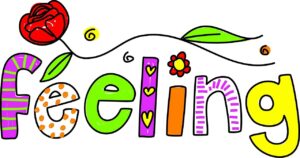Lyrical prose and lyrical language. Words I often hear in the literary world. But what do they really mean?
I took an online course to understand these terms and writing styles. I HIGHLY recommend taking Renee LaTulippe’s course on Rhyme and Meter and Lyrical Language.
What I have learned is that lyrical prose is a writing technique that uses poetry and musicality to enhance writing. Writing in lyrical prose creates an emotional and engaging story. It is rich, layered, and descriptive. It helps to show, not tell. (And we all have heard from editors and literary agents to “show, not tell” in our writing!)
In order to write successfully in lyrical prose, one must understand and utilize poetic techniques.
There are four (4) basic poetic techniques.

1- Figurative language: Using figurative language in your writing helps create pictures in the minds of readers. Examples include:
Metaphor: Comparisons that are DIRECT. (Her hair was the golden sun)
Simile: Comparisons that use “like” or “as” (Her hair was like the golden sun)
Personification: attaching human characteristics to non-human things (The wind danced with my hair)
Hyperbole: extravagant and exaggerated overstatements. They help to create humor, and are not meant to be taken literally. (I’m so hungry I can eat a horse.)
Understatements: also create humor.
Sensory Imagery: by engaging the 5 senses, writing can evoke an emotional response
- Visual (sight) Imagery
- Olfactory (smell) Imagery
- Gustatory (taste) Imagery
- Tactile (touch) Imagery
- Auditory (hearing) Imagery

2- Sound Devices: Adding musicality to the written word enhances the experience. Examples include:
Onomatopoeia: sound words
- Water sounds: dribble, drip, splash, spray
- Animal sounds: meow, chirp, oink, bark
- Air sounds: swish, whip, whoosh
- Collisions sounds: bang, crash, slap, bam, thud
- Vocal sounds: ahem, giggle, grown, eek, moan
Alliteration: a series of words BEGINNING with the same CONSONANT sound
Assonance: Repetition of INTERNAL or ENDING VOWEL sounds.
Consonance: Repetition of INTERNAL or ENDING CONSONANT sounds.
Repetition: Can add some humor or can reveal the gravity of a situation.
Rhyme: use subtly and occasionally in your prose writing.

3- Pacing: There should be a rhythmic flow in the line. You don’t want a meter! Having a meter sets you up to rhyme, and that’s not what I’m talking about here.
4- Diction: use specific and authentic words. Get rid of adverbs (words that end with “ly”) and replace them with strong verbs. (example: smile smugly = smirk, sneer, grin)
A variation of these poetic techniques should be used in some form in fiction, nonfiction, poetry, and all writing. When you’re reading for research, assess how these poetic techniques were used in the recently published books that you enjoy reading. Then, check your writing and analyze how you utilized these techniques in your lyrical writing!
Good luck! and let’s show, not tell!


Thanks for recommending the Lyrical Language Lab! I’m going to check it out so I can cultivate the poetic techniques you mentioned above.
Awesome, Have fun with it!